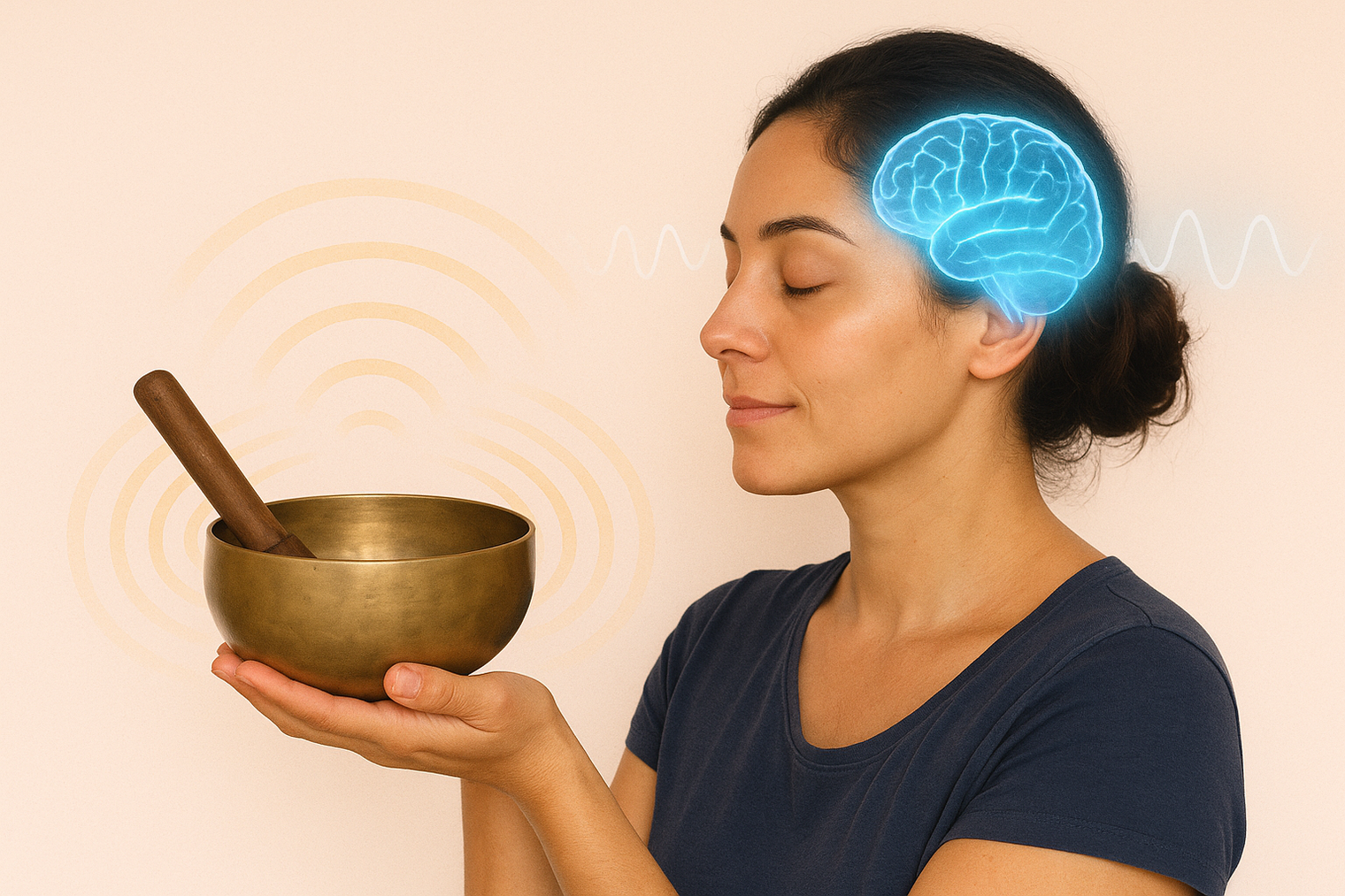Singing bowls have been celebrated for their ability to reduce stress, enhance meditation, and promote deep relaxation. But what is the science behind their effects on our brain? It all comes down to the relationship between sound frequencies and brainwave activity.
How Singing Bowls Influence Brainwaves
Singing bowls produce unique harmonic vibrations that help shift our mental state from stress to deep relaxation and meditation. This process, known as entrainment, occurs when external sound frequencies synchronize with our brainwave patterns. The brain adjusts to these frequencies, promoting a sense of calm and inner peace.
The vibrations reverberate through the body, helping to relax the nervous system, clear mental clutter, and reduce anxiety and tension. This creates a more centered state, enhancing clarity, creativity, emotional balance, and overall well-being. Singing bowls are thus a tool for both mental and physical healing, lowering stress levels, improving circulation, and promoting relaxation.
Understanding Brainwave States and Singing Bowls

The brain operates in different frequency bands, each corresponding to a specific mental state. Singing bowls help modulate these brainwave states:
-
Beta Waves (13-30 Hz) – Active & Alert State
These waves are dominant during thinking, decision-making, or problem-solving. Fast, high-pitched tones from singing bowls can stimulate beta waves, enhancing focus. However, prolonged beta activity can increase stress. -
Alpha Waves (8-12 Hz) – Relaxed & Meditative State
Alpha waves represent a relaxed, creative state. Steady, soothing sounds from singing bowls encourage the brain to enter this state, promoting mental clarity and stress reduction. -
Theta Waves (4-7 Hz) – Deep Relaxation & Meditation
Theta waves are linked to deep meditation and the early stages of sleep. Gentle, sustained resonance from singing bowls induces theta waves, fostering relaxation, intuition, and emotional healing. -
Delta Waves (0.5-4 Hz) – Deep Sleep & Healing
Delta waves occur during deep sleep and profound relaxation. The deep tones of larger singing bowls guide the brain towards delta frequencies, supporting restorative healing and recovery.
Entrainment: Synchronizing Brainwaves with Sound

Singing bowls influence brainwave entrainment, where the brain's frequencies match the external sound, shifting the mind into a peaceful state. This process helps people achieve a calm, meditative state, ideal for relaxation and healing.
The Resonance Effect: Vibrations and the Human Body
Singing bowl therapy also impacts the body through its vibrations. Since our bodies are primarily made of water, sound vibrations travel through tissues, influencing cellular function. This leads to deep physical relaxation, enhanced circulation, and toxin release. The vibrations stimulate the parasympathetic nervous system, promoting rest and repair, lowering blood pressure, improving digestion, and strengthening immunity.
Additionally, singing bowls are believed to balance the body's energy centers (chakras), clear blockages, and restore harmony, leaving individuals feeling more centered and rejuvenated.
Scientific Studies on Singing Bowl Therapy

Modern science is exploring the tangible effects of singing bowls. Several studies suggest measurable benefits for relaxation, stress reduction, and overall well-being:
-
Reduction in Stress and Anxiety
A 2016 study found that listening to Tibetan singing bowls significantly reduced stress and anxiety. Even one session of singing bowl therapy induced relaxation and lowered tension. -
Impact on Heart Rate and Blood Pressure
Research indicates that sound therapy with singing bowls can lower heart rate and blood pressure. A study found that listening to singing bowls before relaxation led to greater reductions in these physiological functions. -
Effects on Brainwave Activity and Cognitive Function
Neuroscientific studies show that rhythmic sounds, like those from singing bowls, shift brainwaves from active beta states to relaxed alpha or theta states, enhancing focus, creativity, and emotional balance. -
Pain Reduction and Physical Healing
A 2018 study found that sound therapy, including singing bowls, helped reduce chronic pain by promoting deep relaxation and stimulating the parasympathetic nervous system. -
Improvement in Sleep Quality
Studies suggest that listening to singing bowls before bed can improve sleep quality by calming the nervous system and promoting deep relaxation.
Conclusion
The science behind singing bowls is grounded in the physics of sound and its impact on brainwaves and the body. By understanding how different frequencies influence the brain, we can use singing bowls as powerful tools for relaxation, meditation, and holistic well-being.

